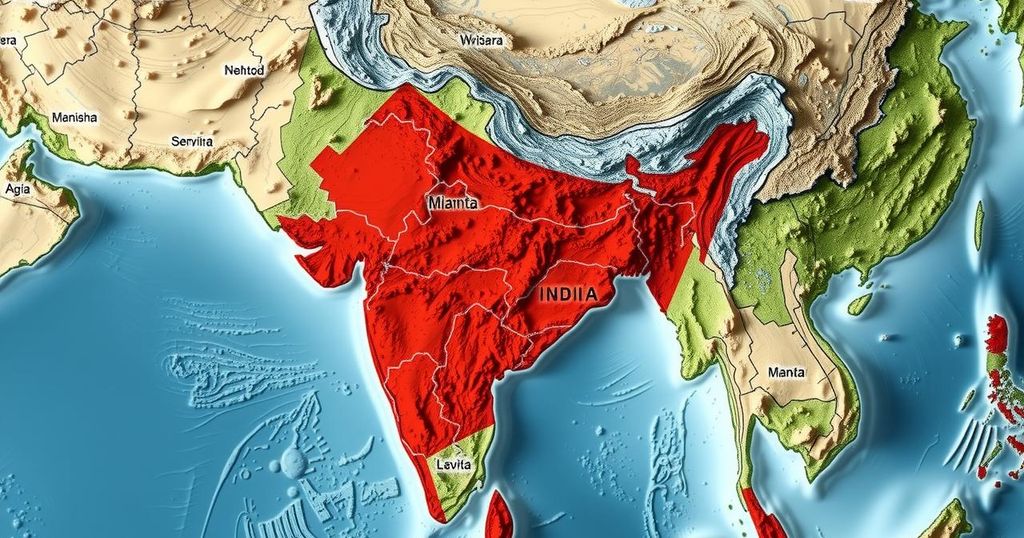India’s Position Among Countries Most Affected by Major Earthquakes
India has been significantly impacted by seismic activity, ranking seventh in major earthquakes globally with 58 recorded from 1990 to early 2024. Recent earthquakes highlight the country’s vulnerability due to its geographical position along tectonic plate boundaries. Countries like China and Indonesia lead in such events, necessitating robust preparedness measures for natural disasters.
On January 7, 2025, a powerful earthquake measured at 7.1 struck southern Tibet, near the Nepal border, impacting a large portion of northern India. The tremors were notably felt in Bihar, with its epicenter located 93 kilometers northeast of Lobuche. This seismic event marks the most powerful in the region since the disastrous earthquake in Nepal in April 2015, which resulted in around 10,000 fatalities.
Countries in Asia are regularly affected by seismic activities, with China and Indonesia ranking among the highest affected nations. Indonesia remains the most earthquake-prone country globally, having experienced 2,212 earthquakes registering a magnitude of 4 or above. In contrast, from 1990 to early 2024, China reported 186 major earthquakes, surpassing Indonesia’s 166 significant seismic events during the same period.
India is ranked seventh in the list of countries with significant earthquakes, having registered 58 major earthquakes between 1990 and January 2, 2024. Such occurrences are attributed to India’s geographical positioning along multiple tectonic plates, along with unregulated construction practices. Approximately 59 percent of India’s area is susceptible to moderate to severe seismic events, particularly in the Himalayan region which is prone to powerful earthquakes, including historical events like the Assam-Tibet quake in 1950 which reached magnitude 8.6.
The National Oceanic and Atmospheric Administration (NOAA) provides comprehensive data on global seismic activity, highlighting nations most affected by catastrophic earthquakes over nearly three decades. Understanding these statistics is crucial for preparedness and risk management in earthquake-prone regions.
The frequency and severity of earthquakes vary by geographical location, with certain areas more vulnerable due to their tectonic settings. Countries like China, Indonesia, Iran, Japan, and the United States consistently report high numbers of significant seismic events. India, located at the intersection of several tectonic plates, is particularly susceptible and has experienced numerous catastrophic earthquakes in its history. The data presented spans the period from 1990 to early 2024, emphasizing the ongoing risk posed by earthquakes in this region.
In conclusion, the recent earthquake in northern India serves as a reminder of the country’s vulnerability to seismic activity. India ranks as the seventh most earthquake-prone nation, with a substantial percentage of its land at risk of significant tremors. Historical data and future forecasts indicate the importance of preparing for potential seismic events to mitigate impacts on the population and infrastructure.
Original Source: indianexpress.com




Post Comment